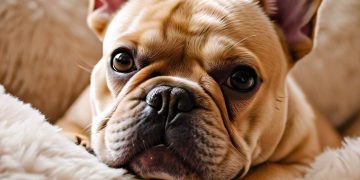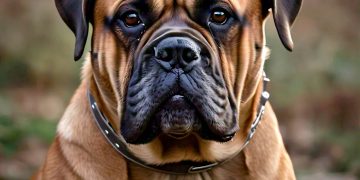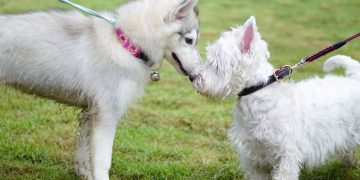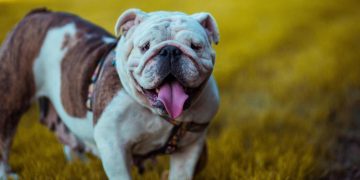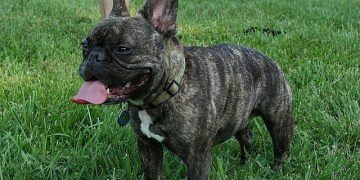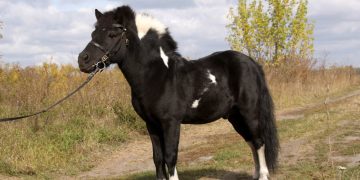The Anadolu Horse, also known as the Anatolian horse, is one of the oldest and most versatile horse breeds originating from Turkey. Known for its endurance, resilience, and adaptability to challenging terrains, this breed has been an integral part of Turkish history and culture for centuries. Its unique traits make it suitable for various purposes, including agricultural work, endurance riding, and traditional festivals. This article explores everything you need to know about the Anadolu Horse breed, from its origins and physical characteristics to its role in modern society.
Table of Contents
- History and Origins of the Anadolu Horse
- Physical Characteristics of the Anadolu Horse
- Temperament and Personality
- Care and Health Requirements
- Dietary Needs and Ideal Environment
- Uses and Roles of the Anadolu Horse Today
- Conservation Efforts and Population Status
- Why the Anadolu Horse is Unique
- Conclusion
1. History and Origins of the Anadolu Horse
The Anadolu Horse, which hails from the Anatolian region of Turkey, has a long history dating back over 4,000 years. Archaeological evidence suggests that horses were present in Anatolia during ancient civilizations such as the Hittites and Phrygians, who valued horses for their strength, agility, and endurance. Over centuries, these ancient breeds were influenced by Arabian, Turkoman, and Mongolian bloodlines, creating the modern-day Anadolu Horse—a hardy breed that is uniquely suited to the diverse geography of Anatolia.
Historically, the Anadolu Horse was highly valued by nomadic tribes and was a vital asset for military purposes, transportation, agriculture, and trade. It played a crucial role in the Ottoman Empire’s military campaigns, where its stamina and endurance in harsh conditions became legendary. Today, the Anadolu Horse is not only a symbol of Turkish heritage but also a beloved breed used in various equestrian pursuits and cultural events.
2. Physical Characteristics of the Anadolu Horse
The Anadolu Horse is known for its medium size, strong physique, and well-adapted structure for endurance and agility. Its appearance is well-suited for the rugged and mountainous landscapes of Turkey, allowing it to excel in long-distance travel and challenging terrains.
- Size and Build: Anadolu Horses are medium-sized, standing between 13.3 to 15 hands (approximately 54 to 60 inches) and weighing around 800 to 1,000 pounds. They have a compact, muscular build with a deep chest and strong legs, which contribute to their remarkable stamina and endurance.
- Head and Neck: The Anadolu Horse has a refined head with a straight or slightly concave profile, expressive eyes, and well-set ears. Its neck is medium in length, strong, and slightly arched, giving the horse a balanced appearance.
- Coat and Colors: The breed displays a variety of coat colors, including bay, chestnut, gray, black, and sometimes palomino. Their coat is often sleek and fine, well-suited for withstanding the heat of Anatolia’s summers while also providing some insulation during cold winters.
- Legs and Hooves: The Anadolu Horse has well-formed, sturdy legs with dense bones and tough joints. Their hooves are naturally hard and durable, allowing them to navigate rough and rocky terrains with ease. This resilience makes them well-suited for long-distance travel and rough, uneven ground.
3. Temperament and Personality
Anadolu Horses are known for their calm, intelligent, and loyal temperament, making them easy to handle and train. They are highly responsive to human interaction, often forming close bonds with their owners, which makes them versatile and dependable partners in various tasks.
Thanks to their history as both working and military horses, Anadolu Horses are also courageous and resilient, capable of handling stressful situations with a steady demeanor. Their willingness to work, along with their gentle nature, makes them suitable for riders of all experience levels. They are quick learners, have an independent streak, and are often able to navigate challenging environments with minimal guidance.
4. Care and Health Requirements
The Anadolu Horse is relatively low-maintenance compared to many other breeds, thanks to its hardy constitution and adaptation to the diverse Anatolian environment. Here’s a look at their care needs:
- Exercise Needs: Given their endurance background, Anadolu Horses benefit from regular exercise, especially outdoor activities that allow them to use their agility and stamina. They thrive in environments that allow them to move freely, such as pastures or open fields.
- Grooming Requirements: Anadolu Horses have minimal grooming needs due to their fine, smooth coats. Regular brushing helps maintain coat health and cleanliness. During the winter, their coat may become slightly thicker, requiring additional grooming. Their hooves are strong and generally require less maintenance, although regular hoof cleaning and checking are essential.
- Health Considerations: This breed is known for its robust health, with few known genetic disorders. Due to their natural hardiness, they are relatively resistant to common equine ailments. However, like all horses, they benefit from routine veterinary check-ups to ensure they remain in optimal health.
5. Dietary Needs and Ideal Environment
The Anadolu Horse is accustomed to a diet based on local vegetation, which typically includes grasses and grains. They are efficient foragers and can thrive on limited resources, reflecting their historical role in areas with sparse vegetation.
Dietary Needs:
- Forage-Centric Diet: Anadolu Horses do well on a forage-heavy diet, including fresh pasture, hay, and supplemental grains if necessary. Their natural adaptation to limited forage means they can maintain health on a basic diet without requiring high amounts of commercial feed.
- Minimal Supplements Needed: While Anadolu Horses don’t typically require high-energy supplements, those engaged in intense work may benefit from added protein and mineral supplements. Access to salt or mineral blocks helps balance their nutrition, especially when forage quality varies seasonally.
Ideal Environment: Anadolu Horses thrive in environments that mimic their native Anatolian landscapes—open, dry, and with access to plenty of space for movement. They can withstand a range of climates, from warm summers to cold winters, due to their natural hardiness. However, they prefer dry and open spaces and are well-suited to outdoor living rather than being confined in stables for extended periods.
6. Uses and Roles of the Anadolu Horse Today
In modern Turkey, the Anadolu Horse continues to be valued for its versatility and endurance. Below are some of the main roles the breed plays today:
- Endurance Riding: Known for its stamina and ability to cover long distances, the Anadolu Horse is ideal for endurance riding competitions. It can travel far with minimal fatigue, a trait that has made it popular among endurance riders.
- Agricultural Work: The Anadolu Horse is still used in rural areas of Turkey for light agricultural tasks, such as herding and plowing, particularly in mountainous regions where machinery access is limited.
- Trail Riding and Tourism: The breed’s calm temperament and agility make it an excellent choice for trail riding, especially on rugged paths. Anadolu Horses are also featured in Turkish ecotourism, allowing visitors to experience traditional riding in scenic, historical regions.
- Cultural Events and Festivals: In Turkey, Anadolu Horses are often part of cultural festivals and traditional events, such as oil wrestling competitions and local horse shows. Their participation in these events serves as a reminder of the breed’s historical significance in Turkish culture.
7. Conservation Efforts and Population Status
The Anadolu Horse population has been impacted by modernization and the mechanization of agriculture, leading to a decline in their traditional use. However, conservation efforts led by organizations and enthusiasts are helping to preserve and promote the breed.
These efforts include establishing breed registries, creating breeding programs, and encouraging the use of Anadolu Horses in various equestrian disciplines. While they are not considered endangered, preserving their unique traits and cultural heritage remains a priority among breeders and horse enthusiasts in Turkey.
8. Why the Anadolu Horse is Unique
The Anadolu Horse is a remarkable blend of endurance, intelligence, and adaptability, characteristics that have been shaped by centuries of survival in challenging Anatolian terrains. Unlike many modern horse breeds that are bred for specific equestrian disciplines, the Anadolu Horse developed naturally, adapting to the rugged demands of its environment and the practical needs of Turkish society.
Its gentle temperament, combined with its agility and stamina, makes the breed highly versatile. Whether navigating mountain trails or participating in cultural festivals, the Anadolu Horse is not only a symbol of Turkish heritage but also a testament to the bond between humans and horses throughout history.
9. Conclusion
The Anadolu Horse is a treasured breed that represents the resilience and cultural richness of Turkey. Its adaptability to harsh environments, combined with its calm and intelligent temperament, makes it suitable for various roles, from agricultural work to endurance riding. Conservation efforts are helping to protect the breed’s heritage, ensuring that future generations can continue to appreciate the Anadolu Horse’s unique characteristics.
Whether you’re an equestrian enthusiast, a historian, or simply a lover of heritage breeds, the Anadolu Horse offers a glimpse into a rich cultural legacy. Its endurance, versatility, and beauty make it an enduring symbol of Turkey’s natural and historical landscape, cherished by all who recognize its significance.

